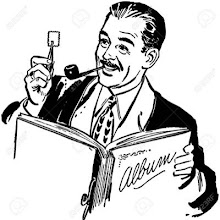Australian captain Ricky Ponting said he did not understand objections to his cricket bat, which the game's lawmakers believe is illegal.
The MCC are concerned that Ponting's bat has been strengthened by a thin strip of carbon graphite, giving him what they feel is an unfair power advantage.
Ponting said the sticker on the back of the bat had been changed to appeal to young cricket fans and protect against wear and tear.
"I've been using that Kahuna bat for the last five or six years, it's just the sticker that's changed this year," he said. The MCC have expressed their concerns to the International Cricket Council (ICC), who will debate the matter as part of an overall review of bats in Dubai next month.
An ICC spokesman confirmed that Ponting's bat was being reviewed, and that he was allowed to use it until the review is completed.
Ponting hit a double-century against Pakistan with the bat in Sydney last January, as well as a century in the recent Asian tsunami charity match at the Melbourne Cricket Ground. He also made 293 runs at an average of 97.66 in the three Tests in New Zealand.
The laws of the game state that the bat's blade may be covered with material for "strengthening, protection or repair" as long as the material does not damage the ball.
Friday, March 6, 2009
Subscribe to:
Post Comments (Atom)

The MCC is keen to restore the balance between bat and ball by altering Law 6, one that pertains to bat manufacture.
ReplyDeleteJohn Stephenson, the head of the MCC Laws Committee, will present a paper to modify the law on Wednesday. "We are concerned at the moment about the balance of the game between bat and ball," Stephenson told mid-day.com, the website of a Mumbai-based tabloid.
"Kookaburra produced a bat with graphite binding on it [the one used by Ponting in 2006], which we said did not conform to the laws of the game. That caused a little bit of a difficulty for us. It meant that we had to redefine or rewrite the law. We thought we had got there last year, but Gray Nicolls came up with a bat handle with composite materials like graphite and titanium. So we decided to redefine the handle in terms of rubber, cane and glue. It's the first time that the bat handle will be defined in the laws of cricket."
No comprehensive research has proved the effect of graphite or titanium bats on the power imparted to shots but Stephenson said the move was being undertaken to preempt the huge influence superior technology could have on bats. "We have engaged scientists to look at the impact," he said. "The use of composite materials could already have had an impact and it could have an impact in future too. It's a thin end of the wedge. If we allow technology to develop, it might shift the balance down the line. We want to shore it up now so that we do not have to retrace our steps. It will also give something back to the bowlers.
Stephenson, who played a solitary Test for England in 1989, said all bat manufacturers had been apprised of the situation at regular intervals. "The MCC and bat manufacturers have agreed to an amicable phasing out of bats," he said. "There are different time-frames fixed for phasing out, so that manufacturers do not lose financially. From a certain period, the bats cannot be used, from a certain period of time, the bats cannot be sold. Amateur cricketers can use the bats till the natural life period. However, after September, it cannot be used in international cricket.
"While we do not want to discourage innovation, we want to ensure bat manufacturers make bats made of willow and bat handles of cane, rubber and glue. That's the rationale behind it, so that in 10 to 15 years, we still look at a game that resembles what we watch now. That's our job - to safeguard the health of the game."